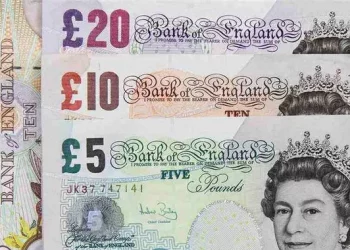The Indian Rupee (INR) slipped on Thursday, pressured by month-end US Dollar (USD) demand and news that a US federal court blocked President Donald Trump’s tariffs, lending strength to the USD. Additionally, climbing crude oil prices added selling pressure on the INR, given India’s status as the world’s third-largest oil importer.
Despite these headwinds, lingering uncertainties around US trade and fiscal policies continue to fuel concerns, potentially undermining confidence in US assets and fostering a “Sell America” sentiment that could weigh on the USD in the short term.
Market participants are closely watching the release of the US second estimate of Q1 Gross Domestic Product (GDP), alongside weekly Initial Jobless Claims and Pending Home Sales data due later Thursday. Federal Reserve officials Thomas Barkin, Austan Goolsbee, Adriana Kugler, and Mary Daly are also scheduled to speak, adding further market-moving potential.
Economic Data and Policy Updates
India’s Industrial Output expanded 2.7% year-over-year in April, surpassing expectations of 2.0% but below March’s 3.0% rise, according to the Release and Implementation Program Statistics Department. Manufacturing Output also improved by 3.4% YoY, ahead of the anticipated 3.0%, reflecting moderate industrial resilience.
Meanwhile, a US federal court ruled on Wednesday that President Trump lacked authority to impose broad “Liberation Day” tariffs on imports from countries with trade surpluses against the US, a decision reported by Reuters.
The Federal Open Market Committee’s minutes from its May 7 meeting revealed that Fed officials remain cautious, agreeing that economic uncertainty justifies a patient approach to interest-rate decisions and signaling a willingness to keep rates on hold amid a cloudy economic outlook.
Technical Outlook: USD/INR Bears Defend Key Resistance
The USD/INR pair remains under bearish pressure, trading below its crucial 100-day Exponential Moving Average (EMA) on the daily chart. The 14-day Relative Strength Index (RSI) near the midline indicates a potential phase of consolidation.
On the downside, the first support level to watch is 84.78, the May 26 low. A decisive break below this could lead to a test of 84.61, recorded on May 12, followed by the psychological 84.00 mark, which also serves as the lower boundary of the prevailing trend channel.
To the upside, the 100-day EMA at 85.55 represents key resistance. A sustained recovery above this level could fuel further gains toward 85.75, the upper trend channel boundary, and potentially challenge the May 22 high of 85.10.
Related Topics:

























